 In the 18th century, when 90 percent of the working population was farmers and most families found themselves living well outside of town, firearms were necessary for protection, hunting, and pest control. Almost everyone learned how to operate and shoot a rifle by the age of 13, and in the back country, each home contained roughly one gun per family member. Flintlock rifles, pistols, and fowling pieces were a part of everyday life in the 1700’s and are still made and used in the Revolutionary City today.
In the 18th century, when 90 percent of the working population was farmers and most families found themselves living well outside of town, firearms were necessary for protection, hunting, and pest control. Almost everyone learned how to operate and shoot a rifle by the age of 13, and in the back country, each home contained roughly one gun per family member. Flintlock rifles, pistols, and fowling pieces were a part of everyday life in the 1700’s and are still made and used in the Revolutionary City today.
Modern firearms are designed on computers, contain parts manufactured by complex machinery, and are put together on an assembly line before being mailed off to thousands of stores across the country. In the 18th century, each firearm made in the colonies was hand-crafted piece by piece by highly-skilled craftsmen using raw materials. The Colonial Williamsburg Gunsmith is keeping the tradition alive to this day, and in fact it is the only place in the world where firearms are still constructed exclusively using 18th-century tools and methods.
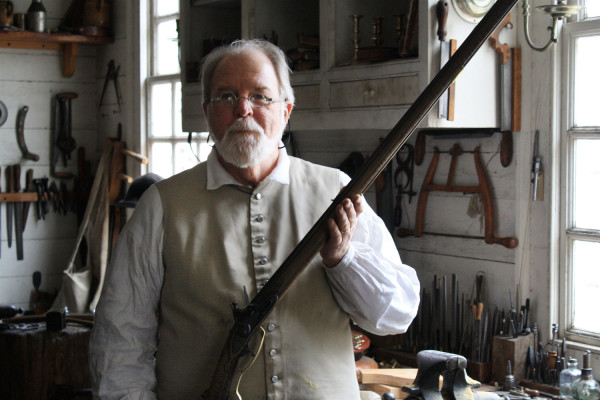
George Suiter has been with Colonial Williamsburg for more than 38 years and is our Master of the Gunsmith Shop. He and his team take blocks of hardwood, solid bars of iron and steel, and pieces of brass, silver, and gold and turn them into beautiful and functional rifles and pistols. Every firearm is a labor of love, with manufacturing taking an average of 400 hours per rifle and 200 hours per pistol. The men and women at the Gunsmith also make candlesticks, hand tools, flatware, door locks, swords, and jokingly say they can make “everything the blacksmith can make, but faster, better, and smarter.” I haven’t made it back to the Anderson Armoury yet to get Ken’s opinion on this.
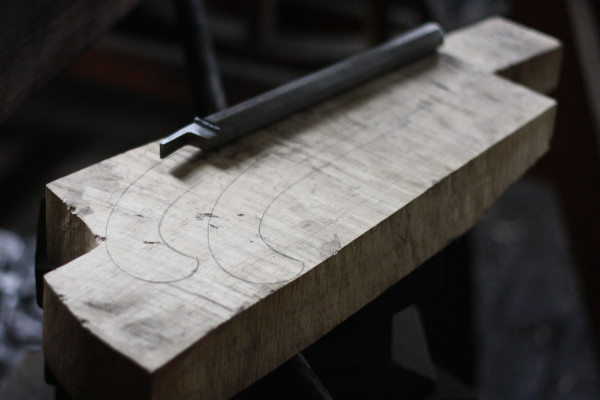
18th-century pistols and rifles don’t have interchangeable parts like modern weapons. Instead, every single spring, screw, barrel, and stock is made by the gunsmith to fit the specific weapon being built at the time. If some part of a rifle or pistol broke or malfunctioned, you couldn’t simply swap the failed piece out for a new one. The whole weapon had to go back to the gunsmith to have the part repaired or a new replacement part made to fit. Imported firearms built in armories in England and France were also available but were much cheaper and frequently required repairs as well. Because of this, gunsmiths were in high demand and easy to find in virtually all counties in the colonies. George compares them to the dozens of auto mechanics we see everywhere today.
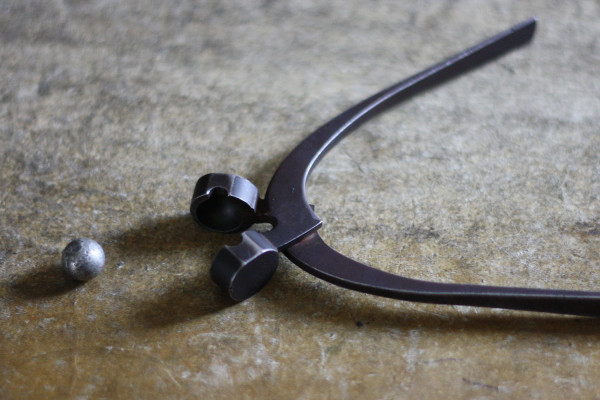
Ammunition in the 18th century was also handled quite differently from what we’re used to now. You weren’t able to go to the store and buy a box of bullets ready to fire; instead you had to make your own ball ammo and measure out the gunpowder for every shot. Because of small variances present in every hand-forged barrel, the actual size of the ball ammo varied from gun to gun. That meant there was no reliable way to make one-size-fits-all ammo, so each weapon came with a mold for casting your own lead bullets that would fit and fire properly. Even today, each firearm that George and his team craft comes with a matching bullet mold as well as a powder horn and measure.

The Colonial Williamsburg Gunsmith is a truly unique place to visit. There is no electricity for heating, cooling, or lighting and there are no modern tools anywhere to be found. Heating isn’t really much of a concern since the entire building was constructed around a two-sided furnace that can reach temperatures in excess of 2,000°F. That does, however, make cooling problematic during our hot and humid Virginia summers. All work is done during the day by whatever sunlight makes it in through windows and doors, so light is only really at a premium during our short winter days. The impressive array of authentic tools they have on hand were all custom made for specific jobs and anyone with even a passing interest in wood or metalworking will instantly fall in love with them.

I asked George what his favorite tool in the shop is and, like any tool lover would, he replied, “all of them.” Prior to becoming our Gunsmith in 1977, George was trained in making barrels for modern guns. He has collected antique tools and firearms his entire life and boasts to have “a little bit of everything” in his private collection. Next time you visit, ask him about some of the more unusual weapons he has helped construct. My personal favorite to learn about was the swivel breech rifle he worked on a couple years ago.
If you’re interested in adding a hand-made 18th-century rifle or pair of pistols to your own collection, George and his team can make that happen. Yes, it will set you back $20,000 and you’ll have to join a waiting list that is currently nine years long, but there are few things as unique as a firearm made using 18th-century tools and techniques in the only shop in the world that can do it.
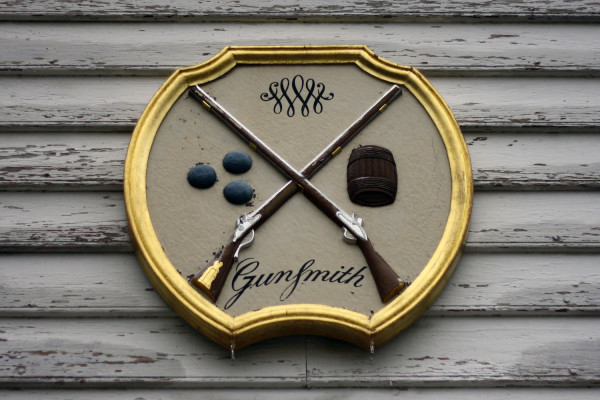

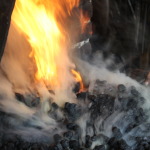
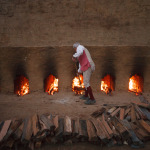
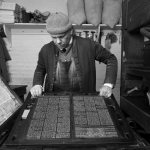
. I will drop every thing at home to see a barrel forged.
I would like to Know when they are foraging a barrel. I will drop every thing at home to see it.
When are they going to forge a gun barrel?
The Tower Pattern Muskets used by the British Army and no doubt many Americans were assembled and tested at The Tower of London from components supplied by contractors working to a common pattern. So for military equipment there was a level of standardisation in the component parts of the weapon.
Thanks for the extra info Stephen. George made sure to point out to me that colonial gunsmiths only built civilian weapons, though they could certainly repair pretty much anything. France sent over 101,000 muskets and 2.5 million pounds of gunpowder to aid us during the Revolutionary War, so I’m sure the local guys had their work cut out for them keeping those guns running.
Anyone watching Mr. Suiter at work in Williamsburg must surely have an appreciation for what he does. I certainly have that appreciation, as I was a three-and-a-half years apprentice to William Dunbar, Dunbar Gun Company, Petersburg, Virginia, while I attended University of Richmond. We worked very meticulously in our gunshop…albeit with modern tools! Thank you so much for keeping this very special craft alive.
Bob Berger
Color me jealous, I bet that apprenticeship was great! There’s something really special about using era-accurate tools for the job isn’t there? I’m sure it introduces a lot of headaches when all you really need is to drill a hole or file off a corner real quick, but I really feel it shows in the final product and in the pride of the maker.
Well done and very interesting! I love watching the process one goes through from beginning to end on handcrafted goods. I envy the gifts these craftsman possess.
Thanks Sean. I also love watching craftsmen work, especially with metal and wood. I’m going to be doing more blog posts about our trades in the coming months so make sure to subscribe and check back often.
What a wonderful article. Thanks so much for sharing and for all you do to preserve our great history. Can’t wait to visit the Revolutionary City again soon!
Thanks Drew, we can’t wait to have you back!